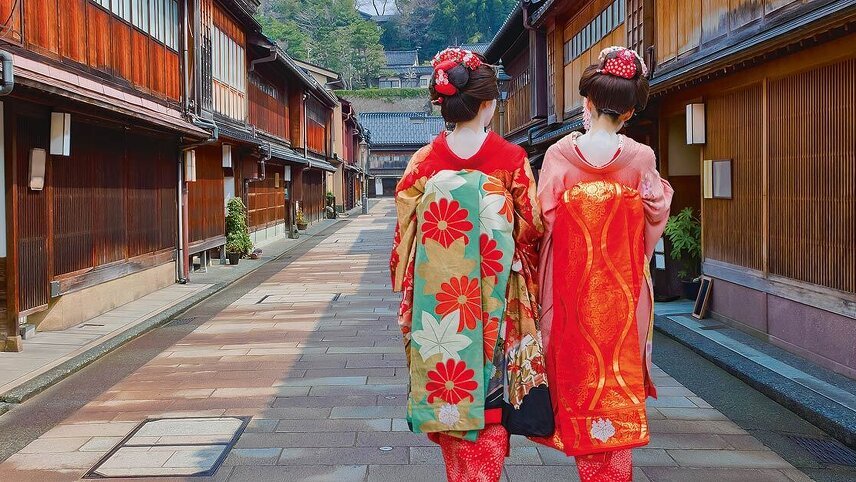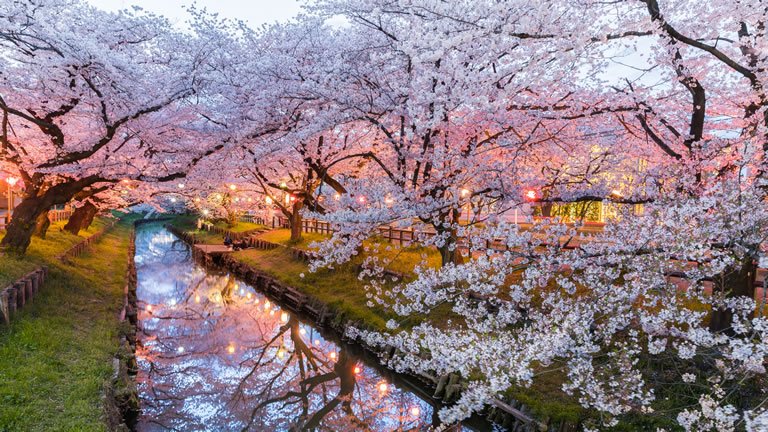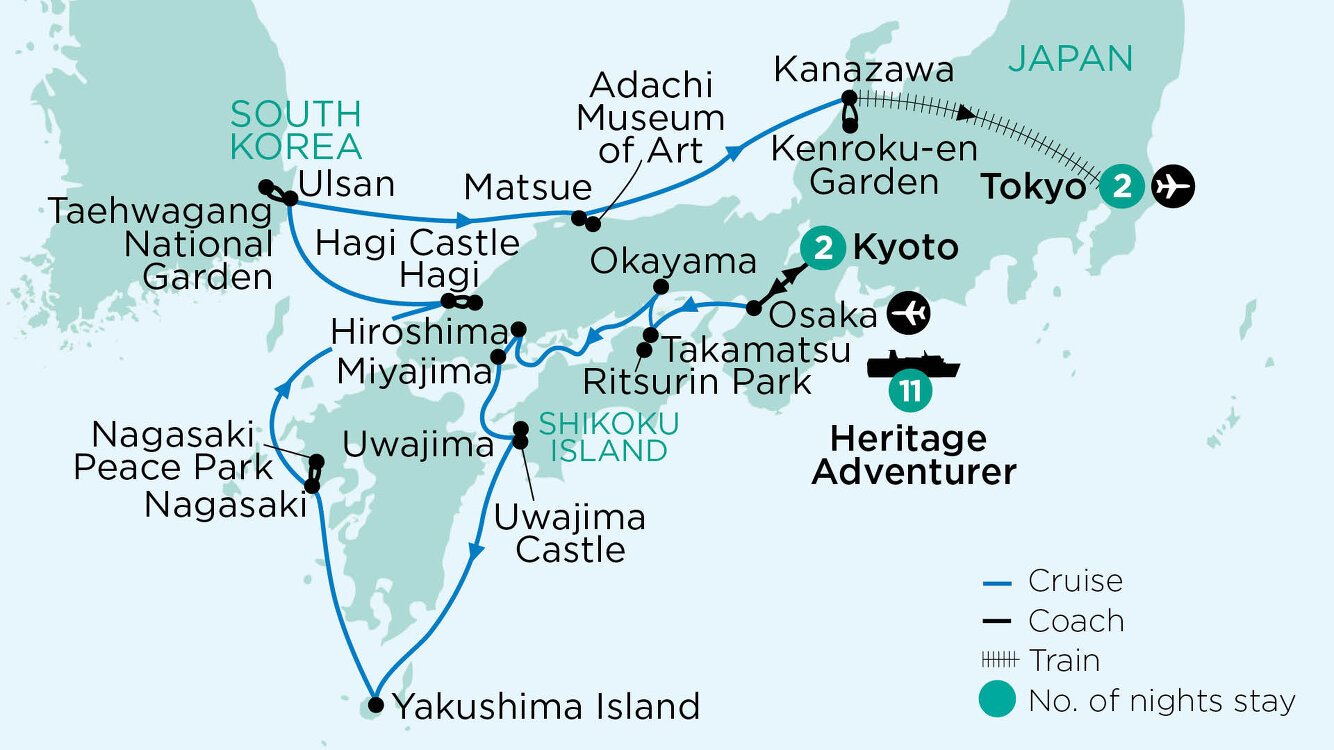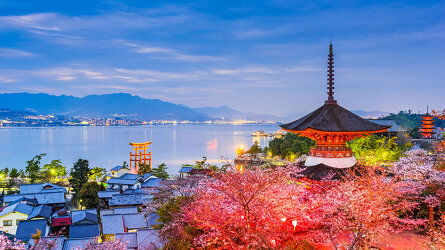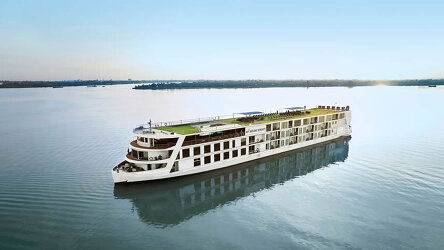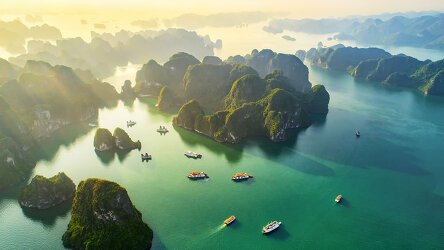Overview
Itinerary
You will be met at Osaka airport and transferred to your hotel in Kyoto. Enjoy a Welcome Dinner this evening where you will meet your Botanical Guide and fellow travellers. Stay Two Nights: Kyoto, Hotel Okura Kyoto or similar (D)
Admire the exquisite rock garden at the Zen temple of Ryoan-ji. Continue to Kinkaku-ji Temple, also known as the Golden Pavilion. The grounds here are a fine example of Muromachi-period garden design. After lunch, visit the gardens of Ginkaku-ji, one of Kyoto's most celebrated Zen temples. Tonight, enjoy a private dinner and maiko (apprentice geisha) performance. Gain insight into the life of maiko and geisha during this unique experience. (B/L/D)
After breakfast, we visit the famous Arashiyama Bamboo Grove, then enjoy free time in Kyoto to shop and explore before travelling from Kyoto to Osaka. This afternoon, we board our ship, the Heritage Adventurer, our home for the next eleven nights. Stay Eleven Nights: Heritage Adventurer (B/L/D)
Tour the stunning city of Takamatsu on the island of Shikoku, the smallest of the four main Japanese islands. Journey over the Seto Ohashi Bridge and visit Kinashi Bonsai Village. Afterwards, explore Ritsurin Park, a 350-year-old garden famous for its magnificent cherry blossoms. Admire the stunning scenery in this historic garden and see the Chrysanthemum Moon Pavilion. Return to the ship for dinner this evening. (B/L/D)
After breakfast this morning, we visit Koraku-en Garden, one of Japan's most significant gardens, whose name means 'Garden of Pleasure After'. Visit a classic Japanese teahouse where Botanica guests will experience a traditional tea ceremony. After lunch, continue to Kurashiki, where we explore the old merchant quarter and its fine 17th-century wooden warehouses. The beautiful houses are painted white with traditional black tiles and are situated along a canal framed by weeping willows. (B/L/D)
Arrive in Hiroshima and visit the compelling Peace Memorial Park. The park is dotted with memorials, including the cenotaph containing the names of all the known victims of the atomic bomb that was dropped on the city in 1945. Return to the ship for a delicious lunch, then continue to Miyajima. Considered one of Japan's top scenic wonders, Miyajima provides postcard-perfect vistas of its scarlet Torii gate, which stands before the Itsukushima Shrine. We go ashore by Zodiac to explore the shrine, founded in the sixth century AD and dedicated to three goddesses. The shrine is a designated World Heritage site. (B/L/D)
Situated along the saw-toothed coast of Uwajima Bay is the city of Uwajima. Today you will have the option of choosing between two activities. You may like to visit Tensha-en Garden, which was built during the Samurai era. From here, continue to the Date Museum, which is home to a collection of samurai weapons and other artefacts that belonged to the Date Clan, who once governed this area.
Alternatively, you may like to visit Uwajima Castle, whose strategic position atop a hill in the middle of the town provided for defence against the threat of an approaching enemy. From the castle, you can enjoy panoramic views of this small town. After your castle visit, discover Tensha-en Garden and the Date Museum before transferring back to the ship. (B/L/D)
Today we arrive on the island of Yakushima, which became Japan's first World Heritage-listed site in 1993. Yakushima is famous in botanical circles for its many great garden plants, including dwarf plants that have evolved to grow smaller than their mainland cousins. We spend our time here enjoying nature walks. At Yakusugi Land, we discover a nature park populated by many ancient cedar trees, including the Buddhasugi, Futagosugi and Sennensugi. (B/L/D)
Arrive in Nagasaki, the second Japanese city destroyed by an atomic bomb during World War II. Tour the Nagasaki Peace Park, Atomic Bomb Museum and Glover Garden. Continue to Dejima Island, built during the Edo Period to accommodate Portuguese Christian missionaries and prevent the propagation of their religion. It was also once the residential quarters of the Dutch, the only foreigners allowed to trade in Japan for 200 years during the period of isolation known as Sakoku.
Japan's fear of outside influence kept the country secluded from the rest of the world during this time. It remained that way until, at the behest of US Navy Commodore Matthew Perry, Japan signed the 1854 Treaty of Kanagawa, which permitted American ships to dock in two of its ports. (B/L/D)
Today, we explore the former castle town of Hagi. Wander well-preserved streets to see the Hagi Castle ruins at Shizuki Park. Visit a traditional, well-preserved samurai house and learn how its residents lived. This house displays the typical interior of a Japanese residence from this time. Afterwards, enjoy free time to wander this charming district on your own. We then stop in at Toko-ji temple before returning to the ship. (B/L/D)
Our ship arrives in South Korea, and the city of Ulsan. While here, you have the option of heading out on a full-day tour, which takes in the Gyeongju National Museum, Bulguksa Temple and Taehwagang National Garden, featuring the Hoes-Oudolf Ulsan Garden, the first Piet Oudolf garden in Asia. Alternatively, visit Jagalchi Fish Market and Gwangan Grand Bridge. (B/L/D)
Having cruised back to Japan, we visit the city of Matsue this morning. Known as the ‘City of Water', Matsue is surrounded by the lakes Nakaumi and Shinji, and the Sea of Japan. Visit some of its cultural attractions, including Matsue Castle. The striking black and white castle is one of only a few wooden medieval castles remaining in Japan today. Admire the graceful exterior of the complex structure, then take the opportunity to explore its interior, from where magnificent views of Lake Shinji are to be enjoyed.
Afterwards, choose to delve into Japan's modern art and culture at the highly regarded Adachi Museum of Art. The museum's adjoining garden is a masterpiece of modern design which has won many awards and accolades. This work of ‘natural art' has been designed not to be entered, however, but to be admired only from select vantage points. Alternatively, visit Yuushi-en Garden, a real flower garden, full of colour and blossom, and famous for its ginseng and peonies. (B/L/D)
This morning, we visit Kanazawa's renowned Omicho Market. The market sells everything from flowers to fish and local handicrafts. Afterwards, take in one of Japan's premier highlights at the famed Kenroku-en Garden, which is ranked as one of the country's top three gardens.
This afternoon, immerse yourself in Kanazawa's culture with a visit to the Higashi Chaya-gai Geisha District. The town retains its traditional housing and layout, which reaches back to the Samurai era. While in Kanazawa, keep a lookout for some of the handcrafted items the region is famous for, including the kimono and gold leaf. This evening, we enjoy a Farewell Dinner aboard our ship. (B/L/D)
Disembark the ship this morning and travel by bullet train from Kanazawa to Tokyo. Stay Two nights: Tokyo, Grand Prince Hotel Shin Takanawa or similar (B/L/D)
Explore the sites of Tokyo today with a morning spent at the Imperial Palace East Gardens, followed by a visit to Ueno Park and the Tokyo National Museum. Finish the day with a visit to the Roppongi Hills Mori Tower for panoramic views of Tokyo. This evening, enjoy a Farewell Dinner. (B/D)
After breakfast today you will be transferred to the airport as our journey concludes. (B)
Trip Inclusions
- See Japan during Cherry Blossom season and explore the exquisite Ryoan-ji rock garden
- Enjoy a maiko (apprentice geisha) performance and dinner
- Visit Miyajima Island, where you will see one of Japan's top scenic wonders, the scarlet Torii Gate, which appears to float
- Discover the famous Arashiyama Bamboo Grove; as well as Kenroku-en Garden, located next to Kanazawa Castle and classified as one of the ‘Three Great Gardens of Japan'
- Escorted by an expert Botanical Guide and Cruise Director
- Return private transfers from door to door, tipping and porterage and port taxes
- All sightseeing, shore excursions and entrance fees as per the itinerary
- 43 included meals over the course of your trip.
- 11-night cruise aboard the Heritage Adventurer for up to 80 Botanica guests
- Four nights' accommodation in centrally located four- to five-star hotels
- Itinerary and inclusions are subject to change
- Fitness rating: Medium
- Shared charter for up to 80 Botanica guests aboard the Heritage Adventurer, which has a capacity of 140 guests. Cruise is in partnership with Heritage Expeditions.
- Our experience of gardens, their flora, and other aspects of nature, is subject to weather conditions and seasonality, which may vary

Availability
Your Global Journeys Travel Advisor will check the availability of your departure date when you enquire. Additional savings may apply. We guarantee the lowest price in Australia. T&C’s apply.
Tour & cruises prices are per person. Prices shown have savings applied, are subject to availability and may be withdrawn at any time without notice. Pricing and trip details are correct at this point in time, however are subject to confirmation at the time of booking and are subject to change by APT. For cruise itineraries, cabin images are sourced from APT. These should be treated as indicative only. Cabin inclusions, upholsteries and room layout may differ to the image(s) shown depending on the ship selected and your sailing dates.
